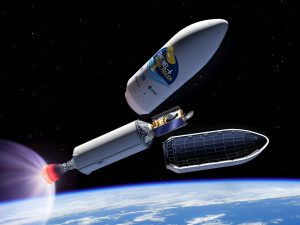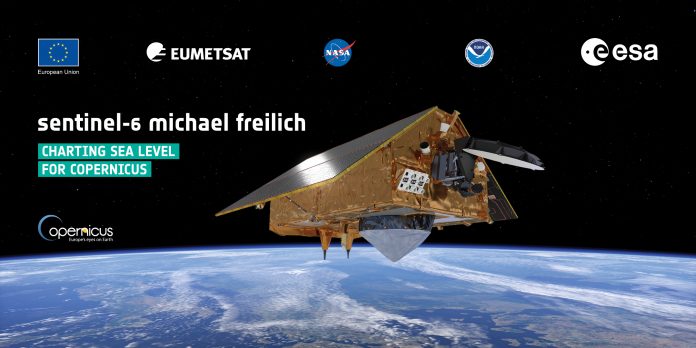Ahead of the launch of the Sentinel-6, the European Space Agency (ESA) and NASA discuss the satellite and future cooperation between the agencies.
The Copernicus Sentinel-6 Michael Freilich satellite, representing a strategic partnership between ESA and NASA, is due to launch from the Vandenberg Air Force Base in California, on 21 November 2020.
Sentinel-6 will measure 95% of the Earth’s ocean, at a 1,336km orbit altitude and an orbit inclination of 66 degrees.
Extending the scope of monitoring sea-surface height measurements is of upmost importance as global sea levels are a fundamental indicator of how the climate is changing. It is essential to get data on and analyse the acceleration of rising sea levels.
Sentinel-6 will allow action to be taken from the international to the local level. It will aid decisions making in the safeguarding of coastal areas, ensuring they have the best defences against sea level rises. The satellite will also have many other applications, such as monitoring plastic pollution in the oceans and the mechanisms transporting pollution.
It will allow scientists to better see the effects of climate change, looking at what is taking place in different areas and helping to mitigate the effects of climate change and prevent crises in the future as much as possible.

The satellite builds on the technologies of previous missions, including the Jason-3 satellite, which has been in orbit since 2016. Sentinel-6 is much more advanced than Jason-3 and has been built with much improved version of instruments and technology.
Speaking at a press conference, to which Innovation News Network was invited, Josef Aschbacher, Director ESA Earth Observation Programmes said: “It is a very important mission for us. It is quite special because it is a mission that is funded and implemented between American and European partners and it is quite unique for Earth science and Earth observation.
“It is a first where we have co-operation with NASA on a Copernicus mission. I would really like to acknowledge the excellent contribution from and work and friendly cooperation with NASA.
“This co-operation has been working so well that both Thomas (Zurbuchen) and myself have already been contemplating whether we could venture into other operations at only at a science, campaign, calibration validation, and data exchange level, but also at a mission level.”
He concluded: “Every increase of sea levels by 1cm is putting about 3 million people at risk. Today, about 680 million people live in coastal areas, which is about 10% of the global population and, of course increasing, rising sea levels are affecting them.”
Thomas Zurbuchen, Associate Administrator at NASA’s Science Mission Directorate, added: “I am really happy to be here today with our European colleagues to discuss this great mission, a mission that is essential to our planet.
“This mission is a critical continuity for our knowledge of sea levels and also advancing our ability to predict the weather. What happens to the oceans affects all of us.”







